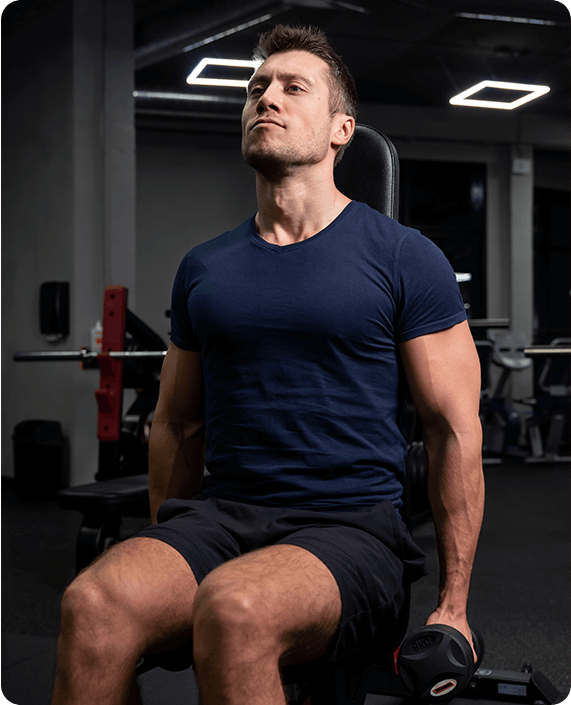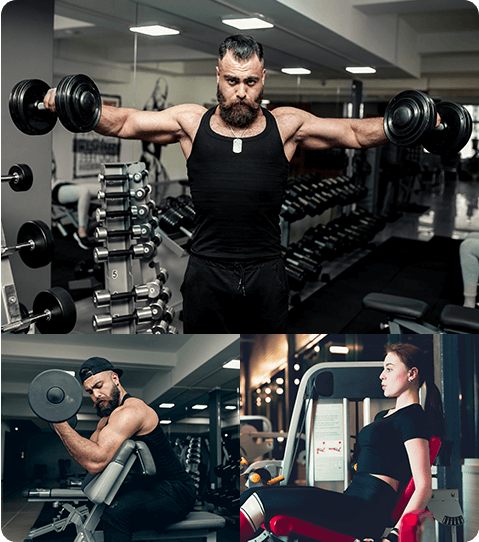Using correct form during exercises minimizes injury risk and maximizes workout efficiency. Take your time—quality is more important than quantity.

Building muscle through strength training helps increase metabolism and improve overall body composition. Focus on compound movements.

Taking adequate rest between sets allows your muscles to recover and perform better on the next set. Find a balance that works for your goals.

Incorporating cardio into your routine improves heart health and stamina, making it a crucial part of any balanced fitness plan.

Gradually increasing the weight or intensity of your workouts helps your muscles adapt and grow, leading to consistent progress over time.


Staying hydrated is essential for muscle function and recovery. Make sure to drink water before, during, and after your workout.
Stretching after a workout helps reduce muscle stiffness and improves flexibility. It’s an often-overlooked part of recovery.
Results come with consistency. Even moderate workouts done regularly will bring more progress than occasional high-intensity sessions.









"I love the structure of these gym workouts! The variety of exercises keeps me motivated, and I've noticed a huge improvement in my strength and endurance."

"These workouts are perfect for my clients. They're easy to follow but challenging enough to see real results. My clients are more confident and fit than ever!"

"The exercises focus on both strength and mobility, which is essential for overall health. I've recommended them to my clients for better muscle conditioning and injury prevention."
Bodyweight exercises like push-ups, squats, and lunges can be done anywhere and are highly effective for building strength without equipment.
Keeping track of your workouts, sets, and reps helps measure progress and set new goals. Use a journal or an app to stay organized.
Foam rolling helps release tension in tight muscles and improves blood flow, promoting faster recovery after intense workouts.
Resistance bands are great for building strength and flexibility. They are portable and versatile, allowing you to target multiple muscle groups.
Proper nutrition fuels your workouts and aids recovery. Ensure you're getting enough protein.
Changing up your workouts prevents boredom and helps avoid plateaus. Incorporate different exercises, weights, and techniques to keep challenging your muscles.
It’s recommended to work out 3-5 times per week, depending on your fitness goals and recovery ability. Consistency is key for progress.
Start with 5-10 minutes of light cardio, followed by dynamic stretches that target the muscles you plan to work on. This helps increase blood flow and flexibility.
It depends on your goals. For fat loss and heart health, prioritize cardio. For muscle building and strength, focus on strength training. A balanced combination of both is ideal.
Rest times vary based on the type of workout. For strength training, rest 1-3 minutes between sets. For endurance or HIIT, shorter rests of 30-60 seconds are more effective.

Consistent gym training provides a wide range of benefits for both physical and mental health. By engaging in regular exercise, you can improve your overall strength, endurance, and flexibility. Strength training, in particular, helps build lean muscle mass, which boosts metabolism and enhances body composition. Incorporating cardio into your routine improves heart health, increases stamina, and aids in fat loss.
One of the most significant advantages of gym training is the positive impact on mental well-being. Exercise releases endorphins, often referred to as "feel-good" hormones, which help reduce stress and improve mood. Regular workouts can also enhance focus, boost self-confidence, and improve sleep quality.
In addition, setting and achieving fitness goals creates a sense of accomplishment, further motivating you to continue on your fitness journey. Whether you're aiming for muscle growth, weight loss, or improved cardiovascular health, a well-structured gym routine can lead to transformative results over time.
For more focused results, design workouts that target specific muscle groups, such as arms, chest, or glutes. Isolation exercises can enhance muscle definition.